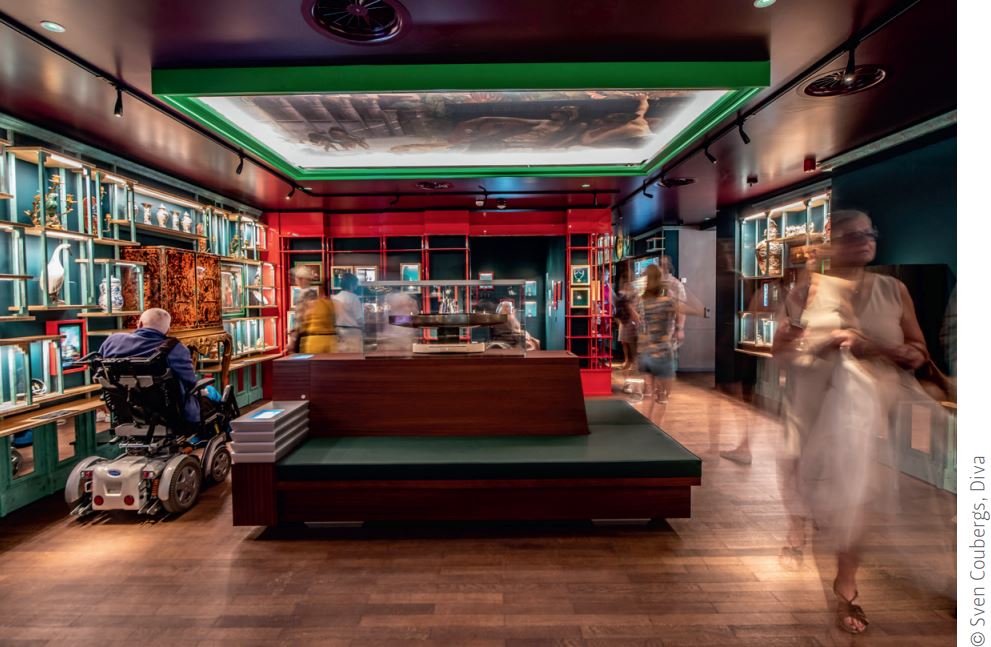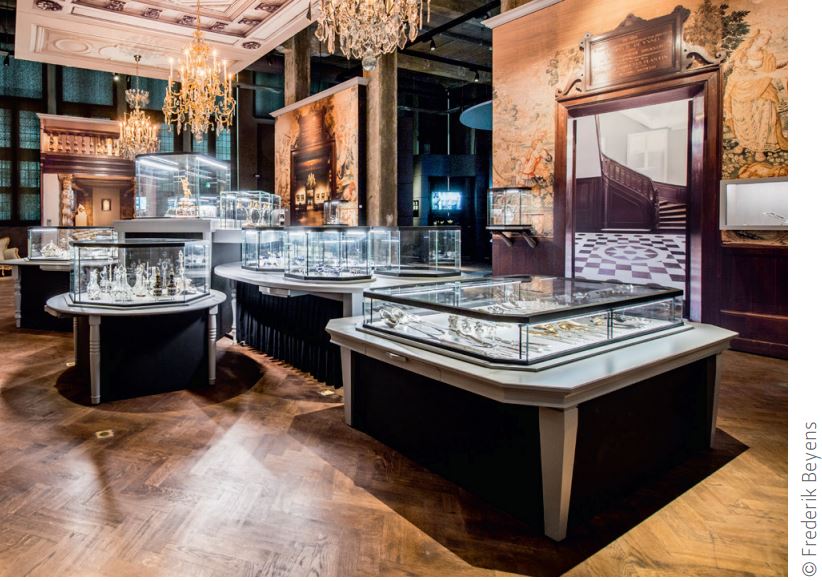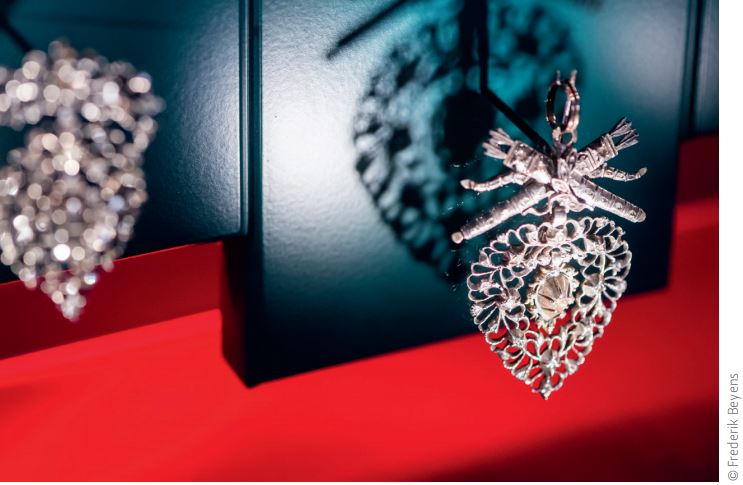- Daily & Weekly newsletters
- Buy & download The Bulletin
- Comment on our articles
Jewel in the crown: Why Antwerp is the leading light of the world’s diamond industry
"How do you know I’m not just going to run away with this?" I ask Stefan Leemans. He smiles as he says: "I think I can run faster than you." It’s a joke, but he would certainly do it if put to the test. He has placed in my hand a seven-carat diamond, so large and beautifully cut that it seems it must be priceless.
But Leemans, one of thousands of diamond traders in Antwerp, will surely find a buyer. He works for Silvius Druon, a trader and retailer located inside Diva, Antwerp’s diamond museum. (After raising my eyebrows at a 4.2-carat stone in the shop worth €85,000, I was spirited up a flight of stairs to get a look at the seven-carat masterpiece.)
While Leemans has a lovely spot inside the museum – which opened in 2018, combing the collections of the city’s former diamond and silver museums – most of Antwerp’s traders work in the diamond district, across from Central station. The district is tiny and not at all flashy, unlike the product that moves through it on a daily basis. The industry here is good for €42 billion in import and export business every year, or 80% of the world’s diamond trade. It’s an extraordinary figure.
Is there any diamond centre comparable to Antwerp? “Nope,” says Diva director Eva Olde Monnikhof, matter-of-factly. “Antwerp is the capital when it comes to diamonds. There are a lot of cities that would like to call themselves the diamond capital, but there is only one.” While ‘diamonds are forever’ might be just marketing, a fascinating history of very real industrial, political and social forces came together to put – and keep – Antwerp at the centre of the world’s trade in diamonds.
It started far away, in 12th-century India, where volcanos spat diamonds out from the bowels of the earth. The Indians found the rough stones pretty and wore them. “The Venetians were getting silk from India, and soon they began taking diamonds as well,” says Olde Monnikhof. “That’s how diamonds made their way across Europe.”

But this trading route was overland, and eventually the Portuguese found they could sail there faster. Specifically, Portuguese Sephardic Jews. “They went into the diamond business partially because they couldn’t become members of the traditional trade guilds,” says Olde Monnikhof. “This was one of the industries that was left open.”
Portugal eventually colonised the region of Goa on India’s south-west coast, taking over the diamond trade there. And then came the 16th century and the Portuguese Inquisition. The diamond-trading Jews fled to Antwerp. “It was still part of the Netherlands, and it was known for its very liberal climate,” she says. “So they went there, and they brought their diamonds with them.”
Thanks to Antwerp’s harbour, it was easy to continue maritime trade. At this point, the gemstones were still being traded rough, but locals soon figured out that they could use diamonds to cut and form other diamonds – and diamond polishing was born. When Belgium declared independence, many Jewish traders moved to Amsterdam, but by the end of the 19th century they were back in Antwerp. “Anti-Semitism was more of a problem in Amsterdam than it was in Antwerp, and the climate for diamond trading was also better here. There were legal and fiscal benefits.”
Then came World War Two, and the Jewish people fled again. Following the war, Antwerp mayor Camille Huysmans put out a call for all the city’s Jews to come back home. “He assured them that they would not face anti-Semitism, that he would make sure that anyone who had a different opinion would be punished,” says Olde Monnikhof. “And it worked. A lot of families who had fled overseas came back to Antwerp.”
And the rest is history. There have been changes, certainly, not least of all the decline of the polishing industry, which moved to India in the 1960s due to labour costs. While India has no more diamond mines (most of the world’s diamonds come from Russia, Botswana and Canada), it now has more diamond polishers than anywhere else in the world.
This led to an interesting migration. “In the 1980s, Indian communities sent their sons to Antwerp,” says Margaux Donckier of the Antwerp World Diamond Centre (AWDC). “They wanted to be active not only in the manufacture of diamonds but also in the trade of diamonds.”

The AWDC is the umbrella organisation for the entire industry, with an office in the centre of the diamond district. “We have 72 nationalities working here,” says Donckier. “While there are other trading hubs, Antwerp is still crucial because we are politically neutral. An Arab, for instance, can’t exactly go to Israel to trade. Here, it’s not a problem for an Indian to trade with an Israeli, an Arab or someone from China. That’s the strength of Antwerp.”
And while the lion’s share of polishing is done in India, the most skilled polishing is still done in Antwerp. Large stones are usually cut and polished here because the tiniest mistake can reduce its value substantially. A perfect polish can raise the value just as much.
Antwerp was also instrumental in leading the charge against conflict diamonds – also known as blood diamonds – about 20 years ago. When it was discovered that an illegal diamond trade was funding insurgencies and warlords in Africa, the AWDC funded the Antwerp Diamond Council, which developed the Kimberley Process. Kimberley has brought the trade in conflict diamonds, which was found in the artisanal diamond sifting trade, from a high of 15% in about 2000 to less than 0.02% today.
“There are now many initiatives in nplace to prevent the sale of blood diamonds,” says Donckier. “And the Kimberley process is constantly under review. When it was started, it was focused on blood diamonds, but now we are more concerned with working conditions and sustainability.”
So … are diamonds forever? Well, they’ve certainly been around the longest. While most gemstones take millions of years to form, every diamond in existence is more than one billion years old. “There was a big explosion in the centre of the earth, and that’s where the diamonds come from,” says Donckier. So in fact, the diamonds coming out of mines today are the first – and the last. “One day we will run out of diamonds, absolutely.”

The 4 Cs
Are the biggest diamonds the most expensive? Not necessarily. The value of a polished diamond depends on the four Cs. Trader Stefan Leemans of Silvius Druon explains.
- Carat: This is purely the weight of the diamond, with 1 carat equal to 20g. The price rises exponentially based on the carat.
- Colour: Based on a scale from ‘D’ (white) to ‘Z’ (yellow). The whiter the colour, the rarer the stone, and the higher the price.
- Clarity: How perfectly formed the rough diamond is, particularly when it comes to ‘inclusions’, which are tiny imperfections. The bigger the imperfection, the less
- valuable the diamond.
- Cut: How well it has been cut and polished, whether it is perfectly proportionate. This influences how it reflects the light and is described as ‘excellent’, ‘good’, ‘poor’, etc.
This article first appeared in The Bulletin 2019

















